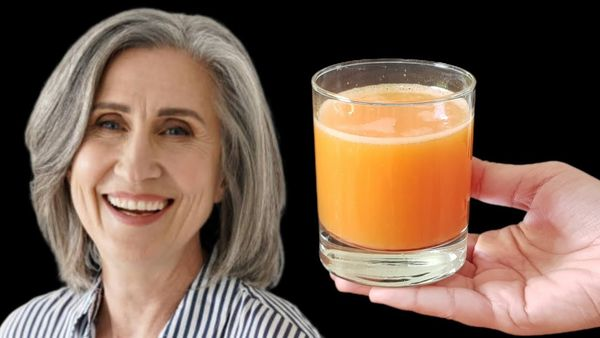
The Meaning Behind the ‘WC’ Sign: A Journey Through Bathroom Terminology
Have you ever noticed the letters WC outside a public restroom and wondered what they stand for? You’re not alone—people across the globe often puzzle over this cryptic abbreviation.
The Mystery of WC
Simply put, WC stands for water closet, a term historically used to describe a small room containing a toilet and sometimes a sink. While this might clarify the letters, it doesn’t exactly make the term feel more logical—similar to how “restroom,” “bathroom,” or “loo” can seem perplexing in their own right.
In 2020, a TikTok video featuring a couple named Shelby and Dylan hilariously highlighted the differences in bathroom terminology between Americans and Canadians. Walking past a sign reading washroom, Dylan quipped:
“What in the world is a washroom? And what are they washing in there? Oh, it’s a restroom. The only thing I wash in there is my hands.”
Shelby, off-camera, cheekily countered, “Do you rest in a restroom?”—to which Dylan admitted: “Good point. They both don’t make much sense.”
The video sparked a lively online debate about what to call the sacred space. Some commenters preferred “bathroom,” while others leaned toward “toilet,” “washroom,” or “restroom.”
One person humorously recounted a Disneyland visit where asking for the washroom led them to the laundromat. Another chimed in with, “Wait until he finds out about water closets.”
What Is a Water Closet?
According to Merriam-Webster, a water closet refers to “a compartment or room with a toilet” or “a toilet bowl and its accessories.”
Historically, the term reflects a time when specific rooms served distinct purposes. Bathrooms were for bathing, restrooms for resting or grooming, and the water closet for, well, using the toilet. As indoor plumbing became more common in the late 19th century, these spaces gradually merged into the modern bathroom we know today.
The water closet, however, often remained a separate, enclosed room in some homes and public spaces, particularly in Europe and international facilities. You’ll frequently spot the abbreviation WC in airports, hotels, or restaurants, catering to a globally diverse audience.
WC Across Cultures
Online forums like Reddit often dive into the quirks of global bathroom terminology. One post posed the question, Why is a public WC called a bathroom if there’s no bath?
A user responded:
“Americans might ask, ‘Why is it called a WC if it isn’t even a closet?’”
Others shared cultural takes:
- In Russian, it’s referred to as a room without windows, even if there’s a window.
- In Esperanto, it’s necesejo, meaning “necessary place.”
- Canadians frequently use washroom, which is also popular in parts of the U.S. Midwest.
Restroom vs. Bathroom vs. Washroom
The terminology debate continues, with many feeling washroom is the most logical since washing happens there. Meanwhile, terms like restroom or bathroom remain euphemisms.
One Redditor summed it up best:
“Best one, I think. You should be washing in there—not resting.”
What Do You Call It?
Whether you say WC, restroom, bathroom, toilet, or washroom, everyone has a favorite term. What’s yours? Share your thoughts, and don’t forget to spread this story to find out what others think!
The Anti-Aging Carrot Drink: A Centenarian’s Daily Elixir

Imagine a simple drink that not only tastes refreshing but also offers remarkable anti-aging benefits. Inspired by a 107-year-old who swears by this daily ritual, this carrot-based beverage is packed with nutrients essential for longevity and vitality. Here’s how to prepare this anti-aging carrot drink that can be a delightful addition to your daily routine.
Ingredients
- 4 large carrots
- 1 small piece of ginger (about 1 inch)
- 1 apple (optional, for added sweetness and flavor)
- Juice of 1 lemon
- 1 teaspoon of turmeric powder
- A pinch of black pepper (to enhance turmeric absorption)
- 1 tablespoon of olive oil or coconut oil (for healthy fats)
Instructions
Prepare the Ingredients
Wash the carrots and apple thoroughly. Peel the ginger. If you prefer a smoother juice, you can also peel the carrots and apple.
Juicing
Use a juicer to extract the juice from the carrots, apple, and ginger. If you don’t have a juicer, you can chop these ingredients and blend them with a little water, then strain the mixture to obtain the juice.
Enhance the Flavors and Nutrients
Pour the freshly extracted juice into a large glass. Add the lemon juice, turmeric powder, and a pinch of black pepper. These ingredients not only enhance the flavor but also increase the drink’s anti-inflammatory and antioxidant properties.
Add Healthy Fats
Stir in a tablespoon of olive oil or coconut oil. This not only adds a smooth texture but also helps in the absorption of fat-soluble vitamins.
Mix Well
Stir the mixture thoroughly to ensure that all the ingredients are well combined.
Serve Fresh
Drink immediately to enjoy the maximum health benefits. Fresh juice can lose its potent nutrients if stored for too long.
Benefits of This Anti-Aging Carrot Drink
Rich in Beta-Carotene: Carrots are high in beta-carotene, which is converted into vitamin A in the body. Vitamin A is crucial for maintaining healthy skin, vision, and immune function.
Antioxidant Properties: Ginger and turmeric offer strong antioxidant properties that fight free radicals, reducing oxidative stress and inflammation, key factors in aging.
Hydration: This drink is also hydrating, which is essential for maintaining skin elasticity and overall health.
Cognitive Health: Ingredients like turmeric and healthy fats are beneficial for maintaining cognitive function as you age.
This drink not only aims to keep you looking youthful but supports your overall health, enhancing your quality of life as you age. Making this part of your daily routine could contribute to a longer and healthier life, much like the centenarian who inspired it. Cheers to good health and longevity!



Leave a Reply